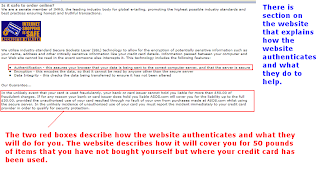When a customer enters a transaction website, it is important to identify and authenticate the customer.
Servers on the Web use two basic ways of identification and authentication;
HTTP: This authentication is where the user is asked for a password and an ID to access the server.
Cookies: As described previously, these are placed on the customer’s computer. Many users view cookies with suspicion as they are able to view your actions (what websites you use, how many times you go on them etc.)

After creating an account with ASOS, you will have created a password and should use this password when logging in to your account on this website. It is important not to share your password with anyone else as your account holds details about you including credit card details. If someone who has malicious intent took your details, you may be open to identity theft or fraud.

If a customer has forgotten their password, it gives you the option of typing in your email address and your unique password will be sent to that email address. This is useful as it only sends the forgotten password to an email address that is specified. This stops someone from stealing your password and is a better method than using a secret question such as ‘What is your favourite colour’ etc. as many people might be able to guess this.

No comments:
Post a Comment